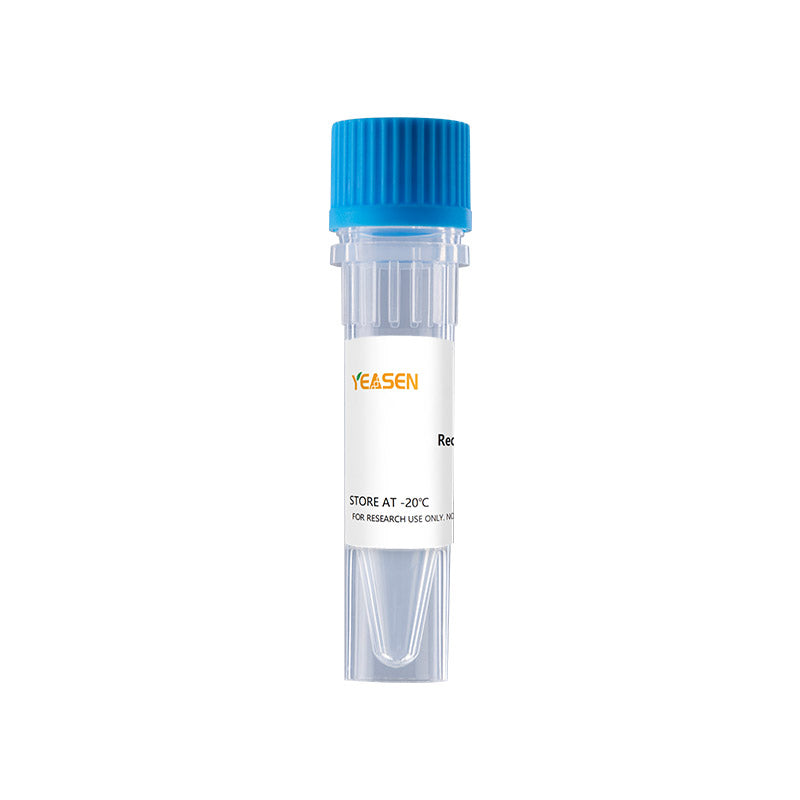Description
CXCL3, also known as DCIP1 in mouse, CINC2 in rat, and GROγ in humans, is belonging to the CXC chemokine family. The amino acid sequence of mouse CXCL3 is 57 % identical to human CXCL3. In rat, CINC-2 has two isoforms, known as CXCL3α/CINC-2α and CXCL3β/CINC-2β. CXCL3 plays a role in inflammation and exert its effects on endothelial cells in an autocrine fashion. Similar to other alpha chemokines, the three GRO proteins are potent neutrophil attractants and activators. In addition, these chemokines are also active toward basophils. CXCL3 was reportedly associated with the invasion and metastasis of various malignancies. As a member of the chemokine family, CXCL3 was previously known to participate in many pathophysiological events. CXCL3 was found to be upregulated in aggressive cancer cells.
Product Properties
|
Synonyms |
chemokine (C-X-C motif) ligand 3, CINC-2beta, MIP2-beta |
|
Accession |
|
|
GeneID |
|
|
Source |
E.coli-derived rat CINC-2β/CXCL3 protein, Arg33-Leu100. |
|
Molecular Weight |
Approximately 7.6 kDa. |
|
AA Sequence |
RELRCQCLKT LPRVDFENIQ SLTVTPPGPH CTQTEVIATL KDGQEVCLNP QAPRLQKIIQ KLLKSPSL |
|
Tag |
None |
|
Physical Appearance |
Sterile Filtered White lyophilized (freeze-dried) powder. |
|
Purity |
>96% by SDS-PAGE and HPLC analyses. |
|
Biological Activity |
The biological activity determined by a chemotaxis bioassay using human CXCR2 transfected murine BaF3 cells is in a concentration range of 5-50 ng/ml. Fully biologically active when compared to standard. |
|
Endotoxin |
< 1.0 EU per 1μg of the protein by the LAL method. |
|
Formulation |
Lyophilized from a 0.2 μm filtered concentrated solution in 20 mM PB, pH 7.4, 50 mM NaCl. |
|
Reconstitution |
We recommend that this vial be briefly centrifuged prior to opening to bring the contents to the bottom. Reconstitute in sterile distilled water or aqueous buffer containing 0.1% BSA to a concentration of 0.1-1.0 mg/mL. Stock solutions should be apportioned into working aliquots and stored at ≤ -20℃. Further dilutions should be made in appropriate buffered solutions. |
Shipping and Storage
The products are shipped with ice pack and can be stored at -20℃ to -80℃ for 1 year.
Recommend to aliquot the protein into smaller quantities when first used and avoid repeated freeze-thaw cycles.
Cautions
1. Avoid repeated freeze-thaw cycles.
2. For your safety and health, please wear lab coats and disposable gloves for operation.
3. For research use only!
Payment & Security
Your payment information is processed securely. We do not store credit card details nor have access to your credit card information.
Inquiry
You may also like
FAQ
The product is for research purposes only and is not intended for therapeutic or diagnostic use in humans or animals. Products and content are protected by patents, trademarks, and copyrights owned by Yeasen Biotechnology. Trademark symbols indicate the country of origin, not necessarily registration in all regions.
Certain applications may require additional third-party intellectual property rights.
Yeasen is dedicated to ethical science, believing our research should address critical questions while ensuring safety and ethical standards.

